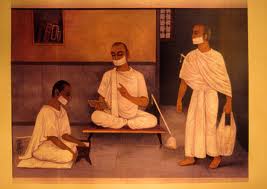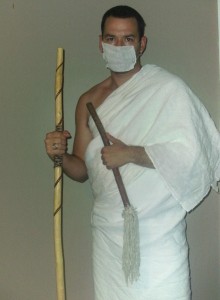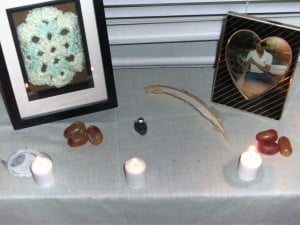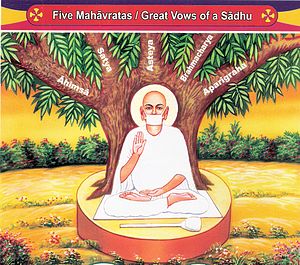According to legend, after Siddhartha Gautama (Lord Buddha) abandoned palace life in search of truth, he spent six years learning from many teachers and practicing harsh asceticism. In fact, his path of asceticism was so intense, that after years of practice, it nearly killed him by starvation. Once he broke his ascetic vows and took a small morsel of food, he concluded thus regarding a life of excess, extreme asceticism, and the Middle Path:
“The loose string, which is like a life of indulgence, produces a poor sound when struck. The overly tight string, which is like a life of extreme asceticism, similarly produces a poor sound when struck and is moreover, likely to break at any moment. Only the middle string which is neither too loose nor too tight, and is like the Middle Path, produces a pleasant and harmonious sound when stuck.“
Modern scholarship suggests that Lord Buddha was actually a Jain Sadhu (monk) before his Enlightenment. In describing his Middle Path, he literally called them “high strung.”
For the month of November, I will follow the Jain ascetic path that nearly killed the Buddha.
Of course, I live with my wife and two children, so I cannot go nearly as far as the Buddha and current Jain Sadhus and Sadvis (female monks) go, but I will go as far as I can.

So what is the Jain religion?
The Jain path is one of self cultivation. Devotees seek moksha (liberation from birth and death) and a state of supreme, divine consciousness. This state is reached by following the path of the Jinas (“conquerors” who have overcome all attachments and aversions). A “Triple Gem” philosophy guides this path for both Jain laity and monks alike:
- Right View
- Right Knowledge
- Right Conduct
Jains do no rely on, pray to, or believe in a central creator god. Many devotees instead offer prayers and meditations to the 24 Tirthankaras (one who achieved moksha and later becomes a historical teacher and role-model for others). Lord Mahavira was the last Tirthankara of this age (taught around the 500’s B.C.) and thus introduced the latest dispensation of the Jain way to humanity.
These Tirthankaras should not be viewed as gods, and the prayers and meditations given from devotees are not performed as a dialog between the two. Devotees instead are focusing on the qualities of these spiritual leaders, attempting to emulate the Tirthankaras and thus achieve moksha and become jina themselves. I should note that every lay Jain’s goal is to become an ascetic in either this life or the next so that they can reach the state of siddha (“one who has accomplished”).
As an honorary Jain Sadhu this month, I have taken the Mahavrata (Five Vows) that lead toward liberation. Jain laity follow these vows as well, but aren’t as strict with the last two.
- Ahimsa (non-injury/violence): Ahimsa is the focal point of the entire Jain way of life. Because Jains believe that every living being has an eternal soul (even bacteria), we should not harm anything. This includes harmful thoughts.
- Satya (Always tell the truth): One must be trustworthy and truthful at all times. Because all of these principles revolve around ahimsa however, if telling the truth leads to violence or injury, one is permitted to remain silent.
- Asteya (no stealing): A Jain never takes what is not given to them. Not even a blade of grass or a flower is plucked without it being offered from its owner.
- Brahmachara (Celibacy): While Jain laity are permitted to have monogamous marriages, Jain monks are not allowed a spouse or even to touch the opposite sex. As an ascetic this month, I will practice celibacy.
- Aparigraha (non-possession): Complete renunciation of ownership and attachment for monks and limited for the laity. Monks only carry their robes (for some sects) and perhaps a bowl and whisk (to sweep away insects). I will use as little as possible in my household, including the computer.
Because monks own only their robes (in some cases), I will only wear robes this month. Here is what I’ll look like:

The walking staff guides my path, the whisk removes any creatures along the way so that I do not cause harm, and the mask prevents accidental inhalation. I will also walk barefoot and avoid all motorized transportation. I will also sleep on the floor, often changing rooms on different days so as to not attach myself to one particular spot. I can only eat once a day and only out of what I can fit within my cupped hand. My wife must offer the food to me, or I simply do not eat.
This month is also unique because I am limited in my computer usage. Some posts may be hand-written by me and then scanned for the page by my wife. She will also update many of the statuses on the Facebook page, and may even write a few posts herself. I will spend a majority of my day in meditation and study of the Jain path.
In many ways this will be my most difficult month. I will draw from many experiences this year to get me through the next 30 days. I would appreciate your prayers and meditations for this month.

